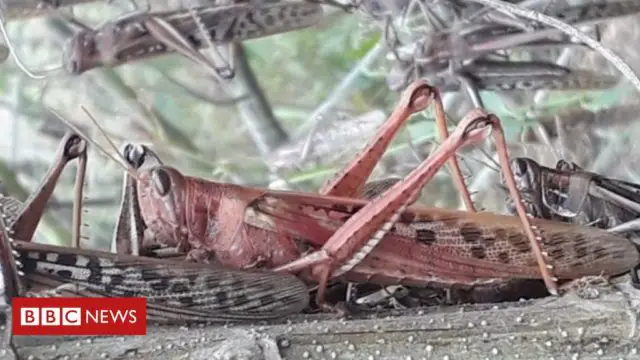An alert to detect outbreaks in Central America of the voracious locust (Schistocerca piceifrons piciefrons Walker), which attacks basic grain crops and some 400 species of plants, issued by the International Regional Organization for Agricultural Health (OIRSA).
In an official communication addressed to the ministries of Agriculture of the Isthmus, OIRSA calls for “increasing phytosanitary surveillance to detect outbreaks and carry out timely controls” of the pest, in the framework of the rainy season that culminates in September.
Surveillance should have a greater emphasis on the areas that have suffered flooding since the passage of tropical storms Amanda and Cristóbal, in May and June. The countries where the locust problem could be “reactivated” are Guatemala, El Salvador, Honduras and Nicaragua, since they were affected by heavy floods, also Costa Rica and Panama, which in the recent past have suffered the plague.
The Central American locust, according to an OIRSA technical report, “is a kind of polyphagus” that can affect more than 400 species of plants that serve as its food. The crops that are “most affected” are corn, beans, sorghum, soybeans, peanuts, sugar cane, chili, tomato, citrus, banana, coconut, mango, and also grasslands.
OIRSA noted that “specialized scientists” predict that, due to the environmental conditions and biological cycles of the Central American lobster, there are high risks of outbreaks that could remain until 2022, which “greatly affect regional agriculture”.
The herbivorous insect sleeves can migrate more than 150 km per day. “The voracity of a lobster weighing two grams (is that) it consumes between 70 and 100% of its weight daily in fresh material. Thus, a swarm with a density of 80 million individuals per km2 can consume about 100 tons of green food per day”, warned OIRSA.
The regional agency asked farmers to report the presence of the Central American locust variety and other species present in the countries of the region. Central America, with about 50 million inhabitants in 520,000 km2, has suffered “serious economic damage” due to locust invasions for centuries, the regional organization recalled.


